Understanding UTV Wheel Sizing, Offsets and Bolt Patterns
Shopping for wheels for your side by side should be easy. Finding a simple explanation of UTV wheel offset or finding out what side by side wheel bolt pattern you need shouldn’t be a chore.
It’s okay to not know everything about UTV wheels, but ignorance can get expensive. The right guide can make sure you’re saving money while staying up to date on fitment, UTV bolt patterns, wheels, etc. Finding the right wheels really isn’t hard with the right guide.
Side By Side Stuff gives you a quick run-down of everything you need to know about your vehicle’s wheels, and how to find the right fit for your rig.
Lots of people have questions on wheel fitment so don’t be ashamed if you’re one of them. If you are, you’re in the right place.
UTV wheel sizing
Side by side wheels come in a variety of sizes. When you’ve got five different measurements coming at you, it can start to get confusing. Once you break it down though, understanding wheel sizing is simple.
First things first, the wheels themselves will rarely measure an exact 10” or 16”. It’s more like 10.5” or 16.5”. This is because the wheel size is measured with the tires mounted. The bead of the tires covers roughly half an inch when mounted, so most SxS riders measure wheels by rounding down to the closest whole number.
Wheel width: The distance from the front (outward-facing) of the wheel to the back (chassis-facing) of the wheel. A typical UTV wheel width is between 7” and 9”.
Wheel diameter: The distance from the bottom of the wheel to the top of the wheel. When people reference how “big” their wheels are, this is the measurement they’re talking about.
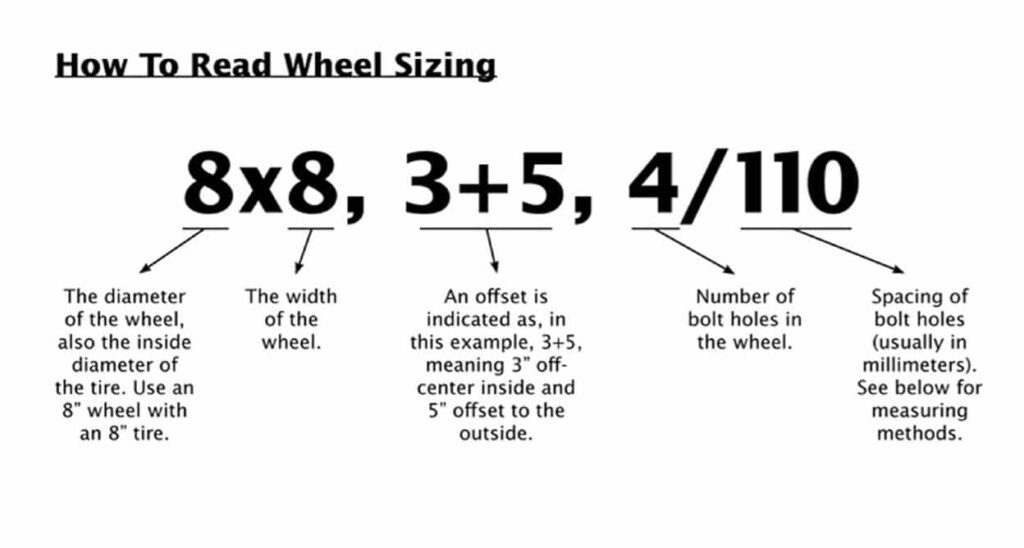
UTV wheel offset explained
The offset is the distance from the hub mounting surface to the center line of the wheel. The idea is to know how much, in inches, your wheel will suck in or stick out from the mounting surface of the hub. Not only will this affect the look of your machine but the ride quality and performance as well.
How to read wheel offset
Offsets are measured with two numbers, both numbers together will equal the total width of the wheel. The first number is the distance from the hub mounting surface to the inner half of the wheel and the second number is from the hub mounting surface to the outer half of the wheel. When those numbers are equal, your hub mounting surface is center, meaning your wheel is not offset.
This diagram shows the easiest “how-to” for reading wheel offset:
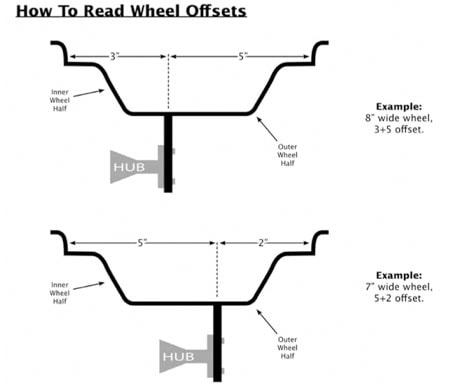
What does a 4+3 offset mean?
With 4 inches of backspacing and only 3 inches from the hub to the front, these wheels have a slightly positive offset. The wheels will be a little more tucked into the vehicle, and keep the center of gravity close to factory standard.
What does a 5+2 offset mean?
When the hub is placed toward the outer half of the wheel, like the 5+2 offset, the more the wheel is tucked in under the machine; this improves width clearance by minimizing the overall width of your rig.
What is a negative offset?
When the hub is closer to the inner half of the wheel, like the 3+5 offset, the more the wheel sticks out beyond the fender; this will increase the overall width of your wheelbase or “widen your stance”. This can improve stability and create room for larger tires.
A negative offset also changes the tires turning radius. In some cases it will make the wheel rub in place that the positive offset or the narrow set wheel will not. Be especially aware of this if you have a Ranger or Defender.
What is a neutral UTV wheel offset?
When the hub is placed center of the wheel the numbers are equal; this means the wheel is not offset one way or another. This will make a difference to your rig if you’re currently running stock wheels, most OEM wheels have a positive offset.
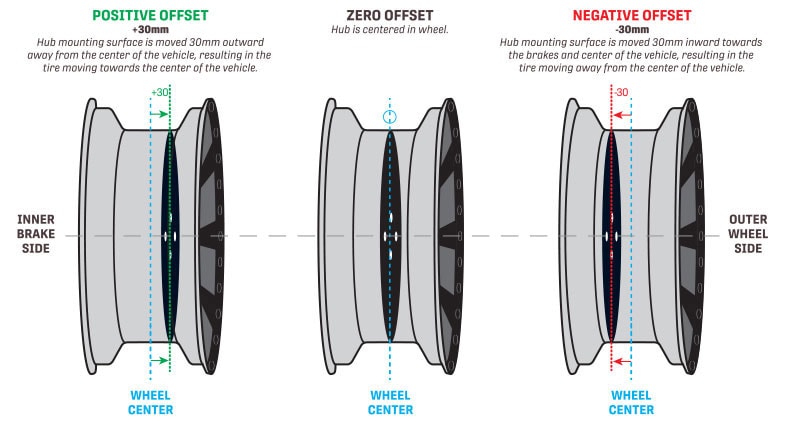
Other ways to measure side by side wheel offset
Canadian or international-focused parts manufacturers measure their wheel offset in millimeters and identify offsets with three terms: Zero, Negative and Positive. The positive or negative number is the measurement in millimeters from the centerline of the wheel to the hub mounting surface. For example: +10mm (positive offset) or -47mm (negative offset).
Once you know what you’re looking for in new SxS wheels, it’s time to make sure those wheels will actually mount on your buggie. The most important thing to remember when buying new wheels is making sure the bolt patterns match.
UTV wheel bolt pattern explained
Now that offsets are cleared up, choosing wheels for your UTV should be easy. If you’re still scratching your head on what kind of bolt pattern you have, look no further: you can determine what your bolt pattern is using the how-to below.
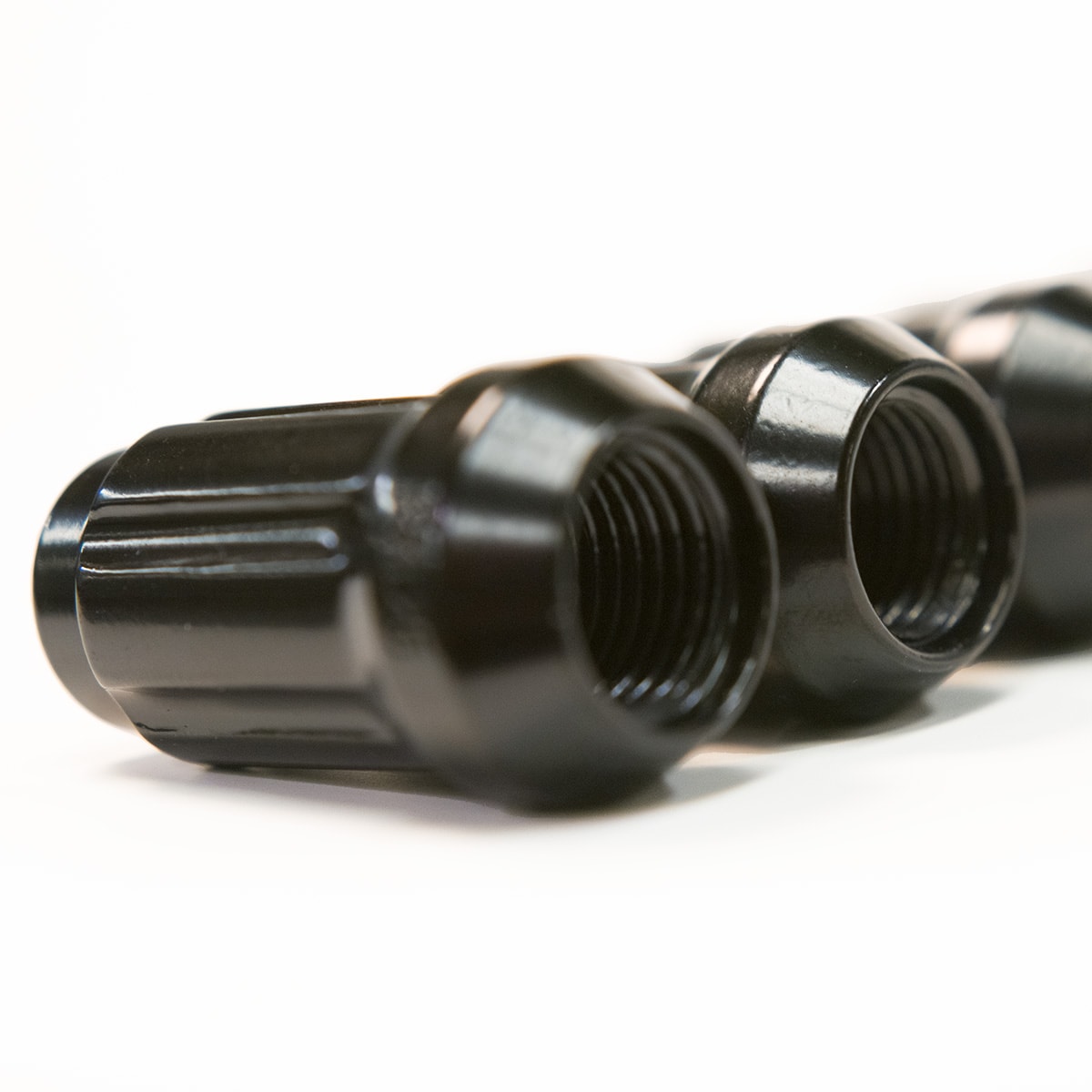
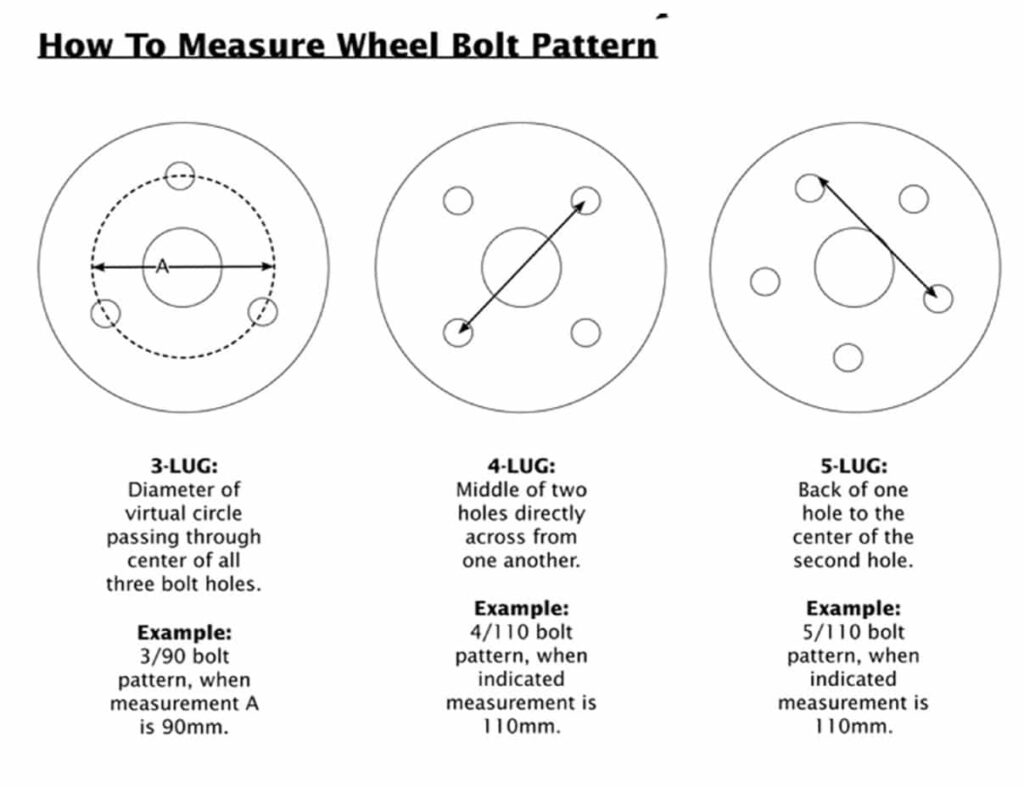
If you can’t get the bolts through, it usually means you have a mis-matched bolt pattern. There are three main types, all measured differently: 3-lug, 4-lug, and 5-lug UTV wheel bolt patterns. The size of the mounting hub will remain the same, but the way wheel bolt patterns are measured changes with each version.
If you’re in a pinch, just know that the two-number ratio (3/90 in the 3-bolt and the 4/110 in the 4-bolt) always tells you the same thing: the number of bolts, and the space between measured bolts. So if you need a 3-lug wheel, you know that any UTV wheel bolt pattern should start with a “3”. (I.e. 3/90, 3/100.)
With UTV wheel offset explained, visual guides to understand sizing saved, offset, and bolt patterns figured out, you have everything you need. It’s time you got an upgrade for your buggy, and we’re here to help. Find the right set of wheels for your side by side at Side By Side Stuff.

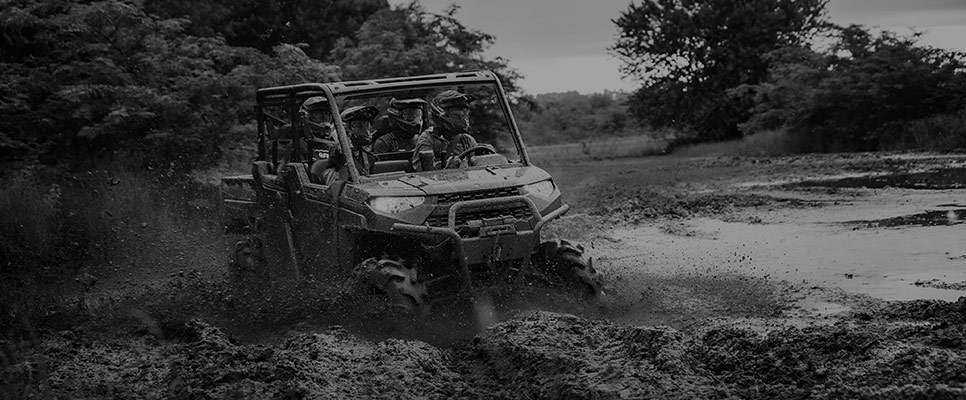
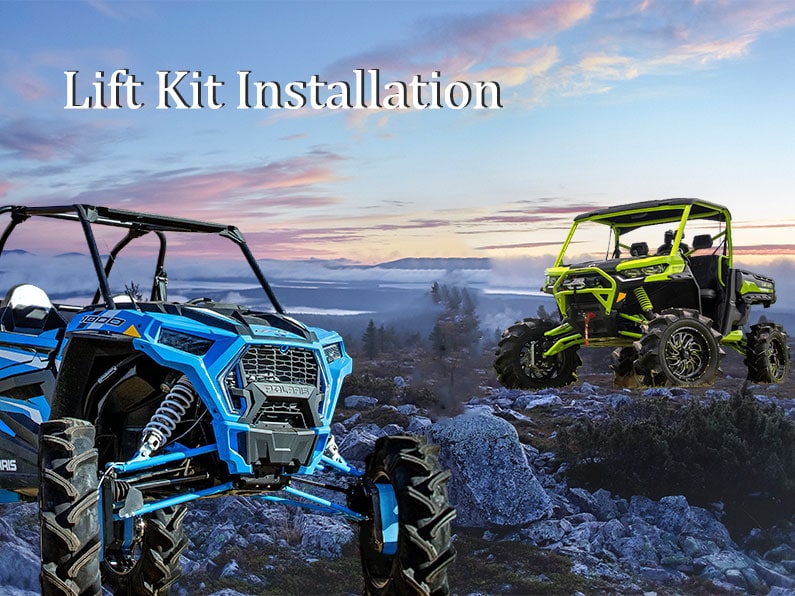
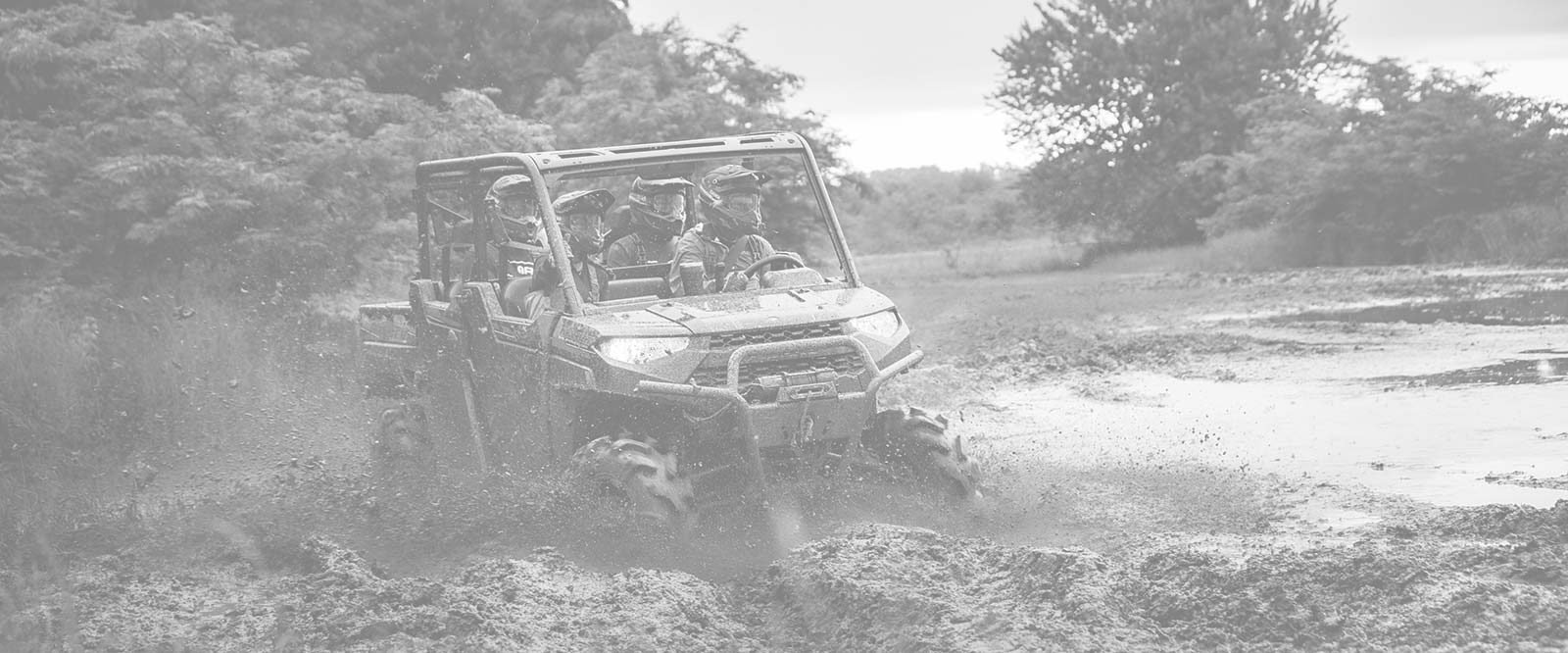
Comment section
1 thought on “UTV Wheel Guide”